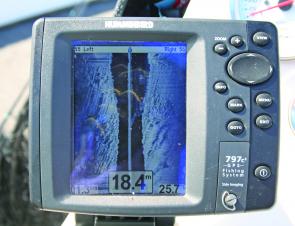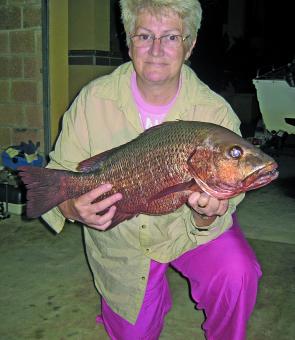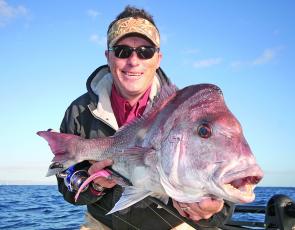Anglers are a strange breed – well, some of us are, anyway. Halfway through summer we are looking forward to winter, and vice-versa.
Don’t get me wrong, summer is a great time to be fishing and didn’t we have a cracker on the Tweed, but the heat on the water tends to get to most of us eventually.
The respite that winter brings is generally a welcome relief and the change in target species often gives us a bit more enthusiasm to get out on the water and have a go.
Cold, early starts are the only disadvantage but on the plus side there are a lot more parking spots at the boat ramp.
May is the first month when we can get a touch of true winter. The air temperature has dropped substantially and with it the water temperature.
Big winter bream start to make their presence felt with greater numbers to follow as the season grabs a stronger hold of the system.
The rock walls around the mouth of the Tweed can hold good numbers of quality bream as they start to make their way up the system.
This area can fish extremely well at times. The trick is to fish around the tide.
Bait fishing is a lot more effective around the slack tides, with dead or live herring, yabbies, mullet gut and fillet baits producing the goods.
Lure fishos experience better results while the tide is running. Plastics fished over the deep coffee rock ledges and deep-diving minnows worked down the faces of the rock walls produce best.
Mangrove jacks become a very rare catch from May and although the odd one still finds its way to the landing net, they are generally more of a surprise by-catch than an actual target species.
Tailor start to find their way into the system in sporadic numbers and start snipping off jig heads and hooks as soon as they arrive.
They should be around the same areas that the bream inhabit, which is great if you are chasing tailor with ganged hooks or slugs but can be very frustrating when they snip off a few expensive bream lures.
Blackfish, although still not in any numbers, will be around and as soon as you see the boys start to line the rock walls on the Tweed, you know it’s time to break out the float gear.
It is often fun just to go down and watch some of the more experienced luderick fishos catching them one after the other while others struggle to catch one.
Snapper become popular offshore species this month.
Floatlining and soft plastics fished on the inshore reefs should see a few of the red fish caught but the bigger models are extremely wary and require a bit more stealth than the smaller squire do.
Try not to drive over the area you intend fishing. This almost always shuts down the bigger fish immediately.
Side-imaging on a sounder is an excellent feature that helps you to see reef out to the side of the boat. It then becomes a case of lining up your drift when fishing plastics or your anchor if you want to berley.
An added advantage is if your drift line changes because of the eddies caused by the current flowing over the reefs.
You can see which side of the boat the reef is on and then fire out a cast in the direction of the productive water.
The deeper reefs also come into their own from May as the current slows down and makes it a bit more practical to fish them.
Snapper, pearl perch, tusk fish and members of the Seriola family (kingfish, samson and amberjacks) are all viable options.
Jigs and live baits account for the better quality fish on these deeper reefs, so it is often worth the stop to stock up on a few yakkas or slimy mackerel.
Just remember to upgrade the leader material and hook size when fishing with live baits.
Beanies, jackets, a hot cup of coffee and hotter fish are what winter is all about – bring it on!
Reads: 2169
Side-imaging sounders make fishing the inshore reefs a lot easier and very productive because you don’t have to drive over the reef to see what is under your boat.

Annette Straume showed up all the blokes with this 62cm mangrove jack to close off the season.

The cold, early starts are worth it when you can catch fish like this.




